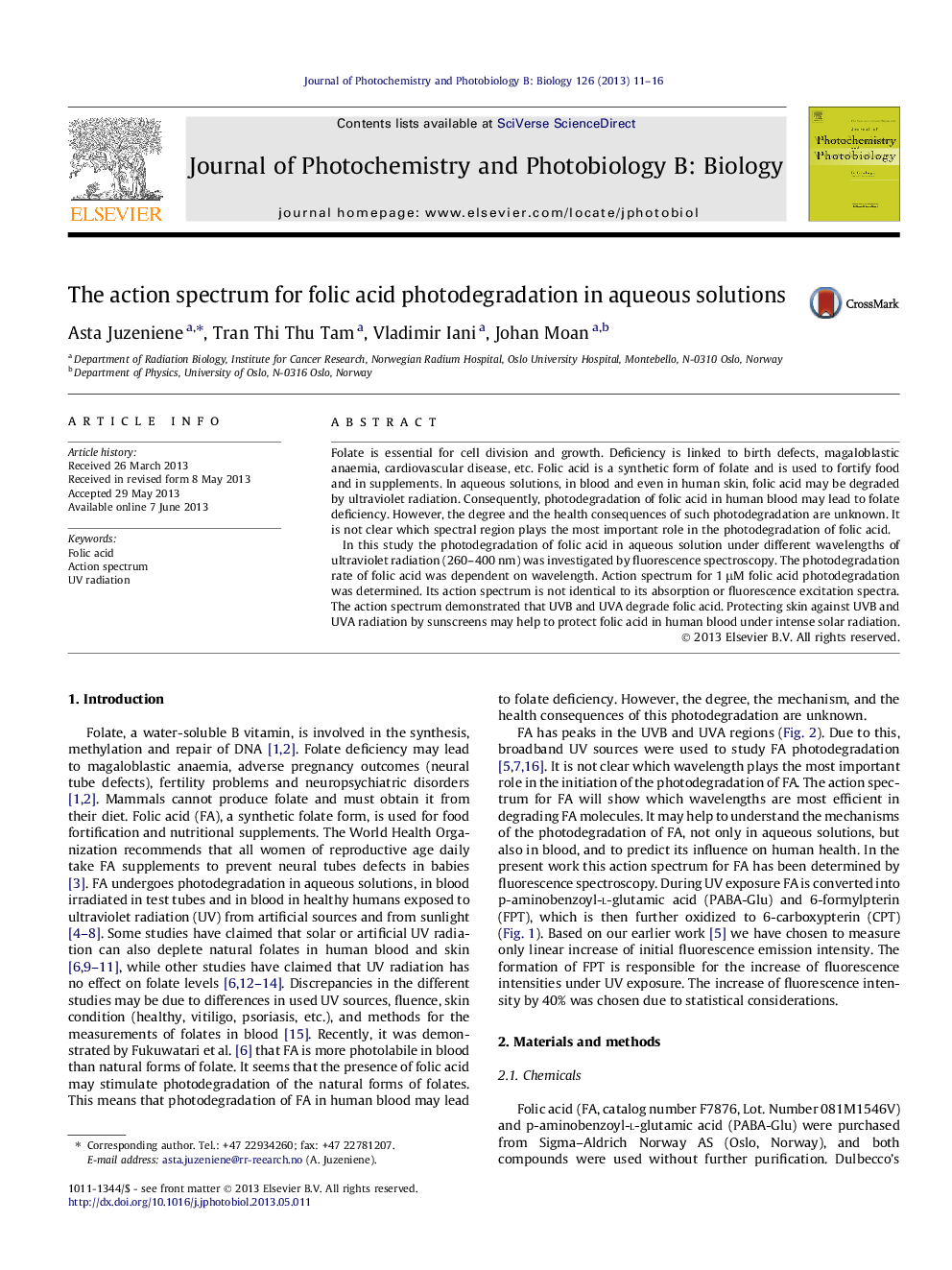| Article ID | Journal | Published Year | Pages | File Type |
|---|---|---|---|---|
| 30489 | Journal of Photochemistry and Photobiology B: Biology | 2013 | 6 Pages |
•The action spectrum of FA demonstrates that UVB and UVA degrade folic acid.•Its action spectrum is not identical to its absorption or fluorescence excitation spectra.•Protecting skin against UV radiation by sunscreens may help to protect folic acid in human blood.
Folate is essential for cell division and growth. Deficiency is linked to birth defects, magaloblastic anaemia, cardiovascular disease, etc. Folic acid is a synthetic form of folate and is used to fortify food and in supplements. In aqueous solutions, in blood and even in human skin, folic acid may be degraded by ultraviolet radiation. Consequently, photodegradation of folic acid in human blood may lead to folate deficiency. However, the degree and the health consequences of such photodegradation are unknown. It is not clear which spectral region plays the most important role in the photodegradation of folic acid.In this study the photodegradation of folic acid in aqueous solution under different wavelengths of ultraviolet radiation (260–400 nm) was investigated by fluorescence spectroscopy. The photodegradation rate of folic acid was dependent on wavelength. Action spectrum for 1 μM folic acid photodegradation was determined. Its action spectrum is not identical to its absorption or fluorescence excitation spectra. The action spectrum demonstrated that UVB and UVA degrade folic acid. Protecting skin against UVB and UVA radiation by sunscreens may help to protect folic acid in human blood under intense solar radiation.
